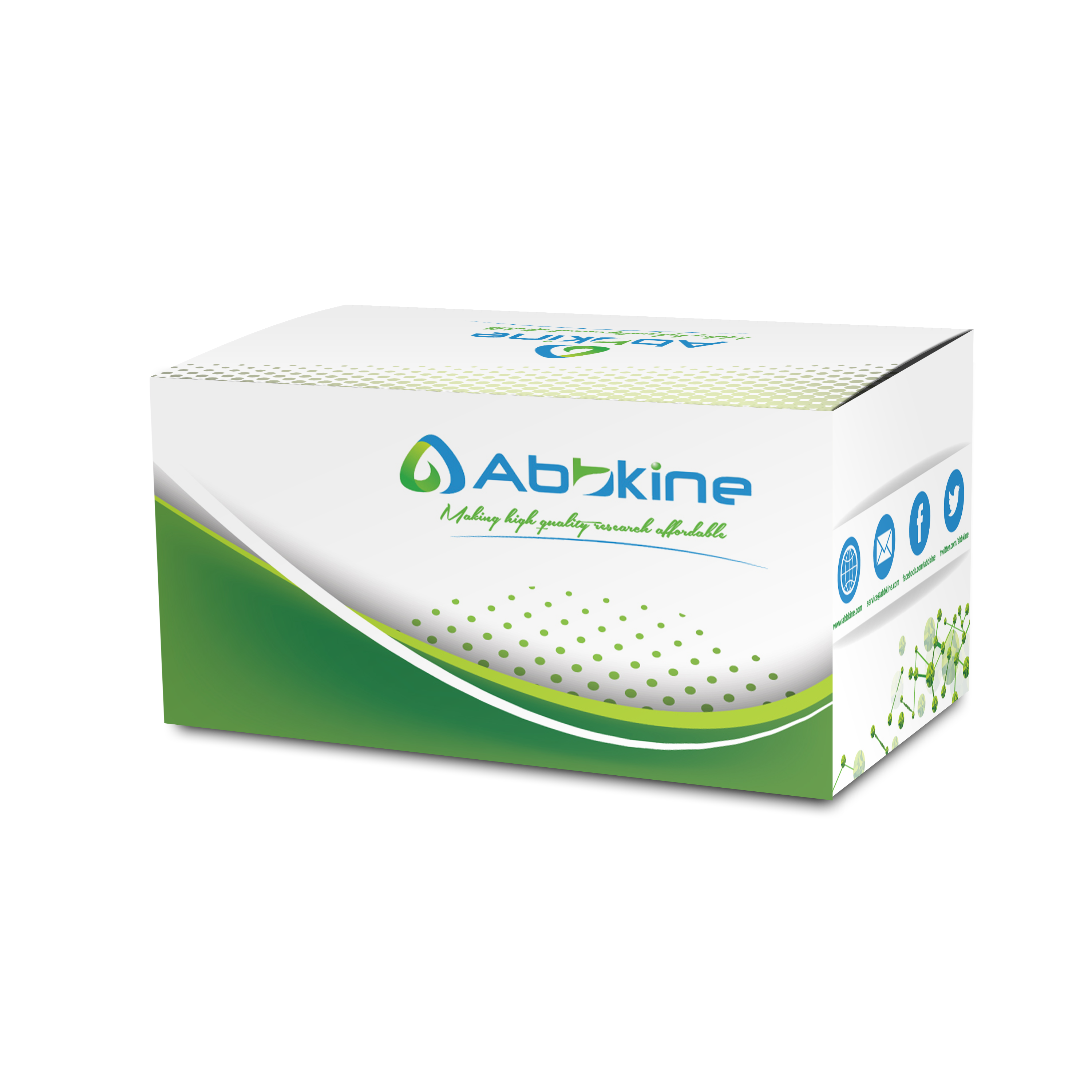| Product name | CheKine™ Micro Mitochondrial complex I Activity Assay Kit |
| Applications notes | Abbkine CheKine™ Micro Mitochondrial Complex I Activity Detection Kitis specially developed for the detection of complex I activity. The operation is simple and convenient, and the detection is more sensitive and accurate. Complex I can catalyze the dehydrogenation of NADH to NAD+. The oxidation rate of NADH can be determined at 340 nm to calculate the activity of Complex I . |
| Kit components | • ReagentⅠ • Reagent Ⅱ • Reagent Ⅲ • Reagent Ⅳ • Reagent Ⅴ • Reagent Ⅵ |
| Features & Benefits | • Detect the enzyme activity of complex Ⅰ in plant tissues, animal tissues, cells. • Provides detailed sample preparation and results calculation methods |
| Usage notes | • Do not mix the components between different batch numbers and manufacturers; otherwise, the results may be abnormal. • Avoid bubbles while mixing or redissolving components. •Change pipette tips frequently to avoid cross contamination between components. • Ensure that all components and equipment are at the proper temperature before starting the experiment. • In order to guarantee the accuracy of experimental results, need to do a pre-experiment with 1-2 samples. If the absorbance values is too high (above 1.5) or ΔA is greater than 0.4, the samples should be dilute with ReagentⅡand then measured again . Pay attention to multiply by the dilution factor when calculating the result. If ΔA is too small, the sensitivity can be improved by increasing the sample volume added. •The protein concentration of the sample needs to be determined by users. |
| Storage instructions | The kit is valid for 6 months. Please refer to the table below Materials supplied and Storage conditions to store all the components. |
| Shipping | Gel pack with blue ice. |
| Precautions | The product listed herein is for research use only and is not intended for use in human or clinical diagnosis. Suggested applications of our products are not recommendations to use our products in violation of any patent or as a license. We cannot be responsible for patent infringements or other violations that may occur with the use of this product. |
| Background | Mitochondrial respiratory chain complex I (EC 1.6.5. 3), also known as NADH-CoQ reductase or NADH dehydrogenase ,is the largest protein complex in the mitochondrial intima. Complex I is widely found in the mitochondria of animals, plants, microorganisms and cultured cells. This enzyme catalyzes the transfer of a pair of electrons from NADH to CoQ, and at the same time it can reduce O2 to produce O2-, which is the main part of the respiration electron transport chain to produce O2-. The activity of Complex I can not only reflect the status of responsibility electron transfer chain (ETC), but also reflect the production of reactive oxygen species (ROS) . |

Fig.CheKine™ Micro Mitochondrial complex I Activity Assay Kit
Yes,It can be crushed by ultrasonic.The reference ultrasonic conditions are as follows: ice bath ultrasonication for 5 min (power 20%, ultrasonication for 3 s, interval of 7 s, repeated 30 times).
Yes, you need to use a 96-well UV plate,because the wavelength to be measured at 340 nm is not visible light, but is ultraviolet, so you need to use a UV plate for measurement.
Store the supernatant and pellet together at -80°C, pay attention to aliquoting and avoid repeated freezing and thawing. It is recommended to use fresh samples for experiments whenever possible.
Mitochondrial respiratory chain complex I can catalyze the dehydrogenation of NADH to NAD+, and directly read the oxidation rate of NADH under 340nm to calculate the activity of the enzyme.
Author:Wu, Ziyu, et al. Publication name: Nature nanotechnology IF:38.1
Author:Luo, Ying, et al. Publication name:Bioactive Materials IF:20.300
Author:Yu T, Zhang Y, Zheng W Q, et al. Publication name:Nucleic Acids Research IF:19.16
Author:Yang, Shuo, et al. Publication name:Science immunology IF:17.6
Author:Zhang, Yong, et al. Publication name:Nucleic Acids Research IF:16.6
Author:Han, Jibo, et al. Publication name:Nature Communications IF:15.700
Author:Zhang, Shaowei, et al. Publication name: Nature Communications IF:14.7
Author:Du, Jiawei, et al. Publication name:Molecular & Cellular IF:14.5
Author:Zhu, Q., Yuan, C., Dong, X., Wang, Y., Li, B., Tu, B., ... & Lu, G Publication name:Cell Reports Medicine IF:14.3
Author:Peng, Fei, et al. Publication name:Theranostics IF:13.300
Author:Lv, Jian, et al. Publication name: Metabolism IF:11.900
Author:Liu, Yingxin, et al. Publication name:Environment International IF:11.8
Author:Zhang, Jiangnan, et al. Publication name:Cell Reports Medicine IF:11.7
Author:Shan, Xiao, et al. Publication name:Redox Biology IF:10.7
Author:Li, Jia, et al. Publication name: Cancer Letters IF:10.100
Author:Wei, Xiang, et al. Publication name:The Plant Cell IF:10
Author:Yu, Wenguang, et al. Publication name: Cell Death & Disease IF:9.600
Author:Duan, Caihan, et al. Publication name: Research IF:8.5
Author:Zhao, Zirui, et al. Publication name:Free Radical Biology and Medicine IF:8.200
Author:Du, Mengran, et al. Publication name: Clinical and Translational Medicine IF:7.9
Author:Liu, Yuqiang, et al. Publication name:Journal of Translational Medicine IF:7.4
Author:Liu S, Tan M, Cai J Publication name:Free Radical Biology and Medicine IF:7.393
Author:Liu, Suyuan, et al. Publication name: Free Radical Biology and Medicine IF:7.1
Author:Lin, Yan, et al. Publication name:JCI insight IF:6.3
Author:S Huo, Q Wang, W Shi, L Peng, Y Jiang, M Zhu Publication name:International Journal of Molecular Sciences IF:6.208
Author:Kang, Jin-Wen, et al. Publication name:Cellular and Molecular Life Sciences IF:6.2
Author:Gong, Qiu-yuan, et al. Publication name:Mitochondrion IF:3.9
Author:Zhang, Xianqi, et al. Publication name: Experimental Cell Research IF:3.3
Author:Wang, Huan, et al. Publication name: Biology of Reproduction IF:3.1
You must be logged in to post a review.
Reviews
There are no reviews yet.